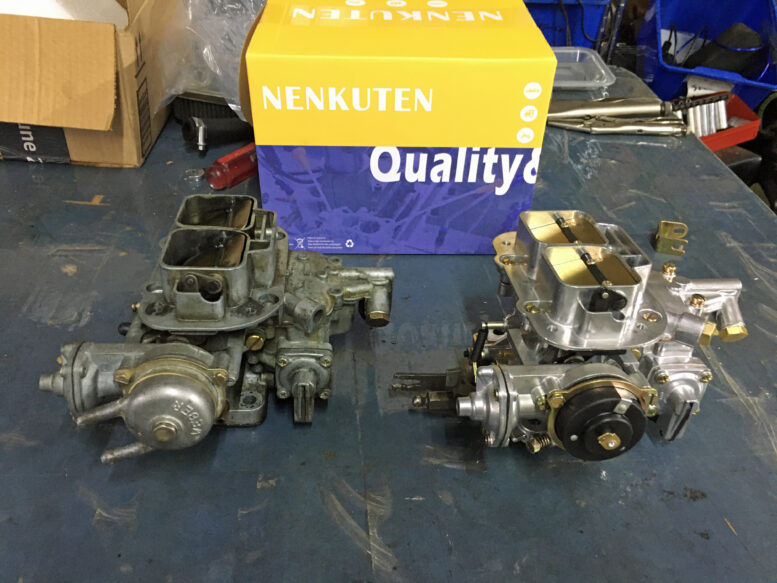Sorry to have written a two-part cliffhanger a few weeks ago (part I, part II), then walked away from it for long enough that no one likely cares, but I had other more pressing matters.
I need to preface this, the end of the Chinese-made Weber saga, by citing something from my career as a software engineer. There was a brute-force technique I and others used to find particularly pernicious bugs in a piece of code: You’d remove half the code by “commenting it out” (inserting syntax telling the compiler that everything between two markers is a comment, not actual code) and see if the problem went away. If it did, then the bug was somewhere within the commented-out section, so you’d concentrate on that, “un-comment” it, remove half of it if necessary, etc. But if the problem was still there, you’d remove half of the remaining code, and so on, until the amount of software left was so small that either your feeble brain could look at it and say “Oh, there’s the problem, I am such a doofus,” or you could honestly say that nothing was wrong with it, in which case you were the owner of a real honest-to-goodness compiler bug. Hey, it happened a couple of times. Once, 40 years ago while processing one particular set of ground penetrating radar data on a DEC PDP-11, my Fortran program kept crashing the computer. I used this technique, and finally got it down to a single line that simply subtracted two numbers. If I changed either of the two numbers, no crash. Genuine compiler bug.
The “remove half the code” technique was usually successful, but every once in a while, the result would be indeterminate. That is, after all this Zeno’s Paradox-like iterative halving, you still wouldn’t find the bug, and when you put it all back together, the bug wouldn’t be reproduceable. Other programmers and I referred to this as “the ant in the sandpile problem.” That is, you’d imagine seeing an ant crawl into a big pile of sand. You remove half the sand, then another half, etc, and when you got to the end, find no ant at the bottom.
So, with all this in mind, let’s revisit the el-cheapo Chinese-made Weber clone. The origin of my having purchased the $115 “Nenkuten”-branded Weber on Amazon was that Hampton, my 49,000-mile survivor ’73 2002, had a years-long problem of hard starting. Other than having a 1991-dated Spanish-cast genuine Weber 32/36 carburetor, the car was very original, right down to its intact EGR plumbing and its still-connected vacuum-retard distributor (yes, ’73s had them; I was surprised as well). Despite my wanting to retain that originality, in the five years that I’ve owned the car, I’ve removed some of these items. For example, I was concerned the EGR valve might be the source of a vacuum leak (it did crack in half when I removed it). Without the emissions plumbing like the EGR valve, there was no reason to have the vacuum-retard dizzy, so I replaced it with what I regarded as a proper vacuum advance unit from an earlier model 2002. However, none of this, nor anything else I did, affected this odd problem of the car occasionally being nearly impossible to start. It cranked and had spark. The problem clearly seemed attributable to the carb. Since the car had sat in a barn for ten years before I bought it, and since all I’d done to the Weber was pulled the top, wiped a little bit of sediment out of the float bowl, and blown out the jets, it certainly was possible that some internal passage was clogged.
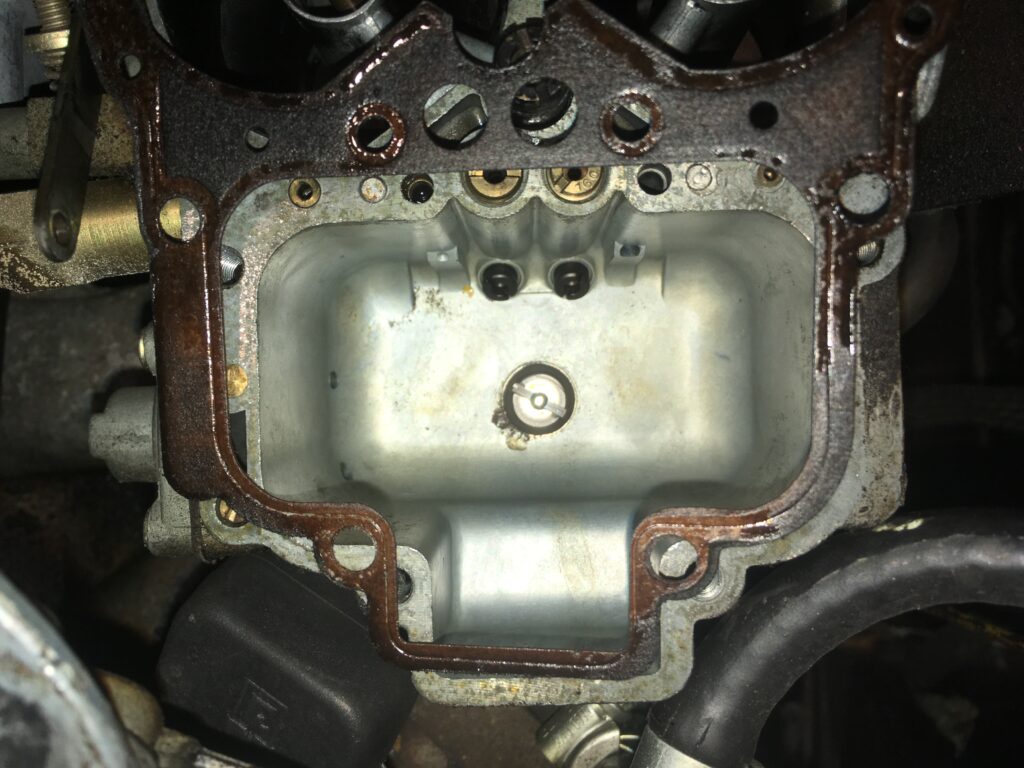
The dry and relatively clean float bowl when I bought the car.
Enter the cheap Chinese-made Weber. As I wrote in the first two pieces, I selected one on Amazon with good reviews, and when I installed it, initially I was almost giddy at the result. The carb bolted right onto the manifold, and other than having to transfer over a linkage bracket and nut, installation was turnkey. With it installed, the car seemed to snap to attention easier than it ever had. There were the usual cold and warm idle adjustments, but I got it to the point where it would start without even hearing the engine crank multiple times through all the cylinders—a snap of the key to the right, and bam. It was awesome.
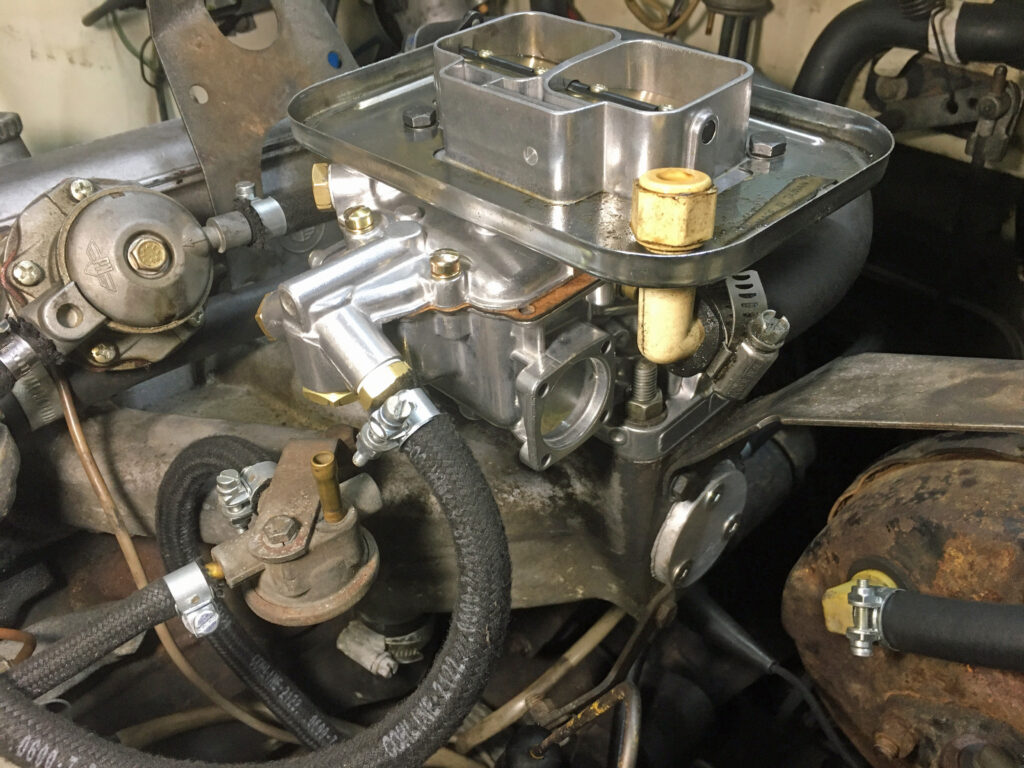
The $115 Nenkuten Weber clone. It was shinier than anything else in the engine compartment.
But when I drove the car, I found that the Weber clone had the same steady-throttle running issue that the original Spanish Weber once had. That is, it had a steady-throttle buffeting that’s often associated with lean running. I’d solved this a few years ago by installing larger idle and main jets. So I transferred over all the jets from the car’s Spanish Weber (this particular Chinese-made clone accepted original Weber jets, something that apparently isn’t true of all of them) and the problem went away. However, the engine’s response when I mashed the throttle and the the second barrel kicked in wasn’t as snappy as that of the Spanish Weber. I fattened up the main jet in the second barrel, but that didn’t level the Weber playing field in the match between Spain and China.
Over the next few weeks, I drove Hampton on a few errands, but honestly, I probably started the car (pumping the gas pedal once before each start) so I could move it in and out of my garage as part of the usual driveway Tetris more than I actually drove it.
At some point, the no-start problem suddenly returned with a vengeance. Gone was the crack-the-key-BAM-car-starts-without-the-engine-cranking-through-all-cylinders advantage that the Chinese-made Weber appeared to have over the Spanish one. In its place, the car wouldn’t start even with prolonged cranking, nor with pumping the pedal to make the accelerator pump squirt gas down the throat. Although the engine had spark, starting fluid wasn’t a magic bullet either. It was bizarre. Initially I thought “GOOD! Now I can diagnose it and fix it once and for all.” But then I couldn’t.
The exact chain of events then gets murky, as it wasn’t the only thing I was working on, and I wasn’t writing things down. I tried a number of things. I installed new plugs, though the ones in the car were recent and showed no signs of fouling. I put the old vacuum-retard distributor back in. I changed plug wires. I swapped in a different coil. I re-checked timing and dwell. I don’t recall exactly what it was that got the car running. It may have thrown the “for consistency I’ll blip the throttle exactly once when I start it” out the window and instead held the throttle wide open while starting the car.
Since replacing the genuine Weber with the Chinese clone had not solved the car’s starting problems, and since the clone performed demonstrably worse on mashed-throttle acceleration, I re-installed the Spanish Weber. As someone had hypothesized in a comment on my last post, when I pulled off the clone, I found a non-trivial pool of gas sitting in the intake manifold. I guess it’s possible that, and the flooded engine it implies, came from a series of single-pump starts followed by moving the car in the driveway instead of driving it far enough to use the gas. Since then, the genuine Weber has generally started easily, and has the solid advantage that its performance when burying the throttle is clearly crisper than its Asian progeny.
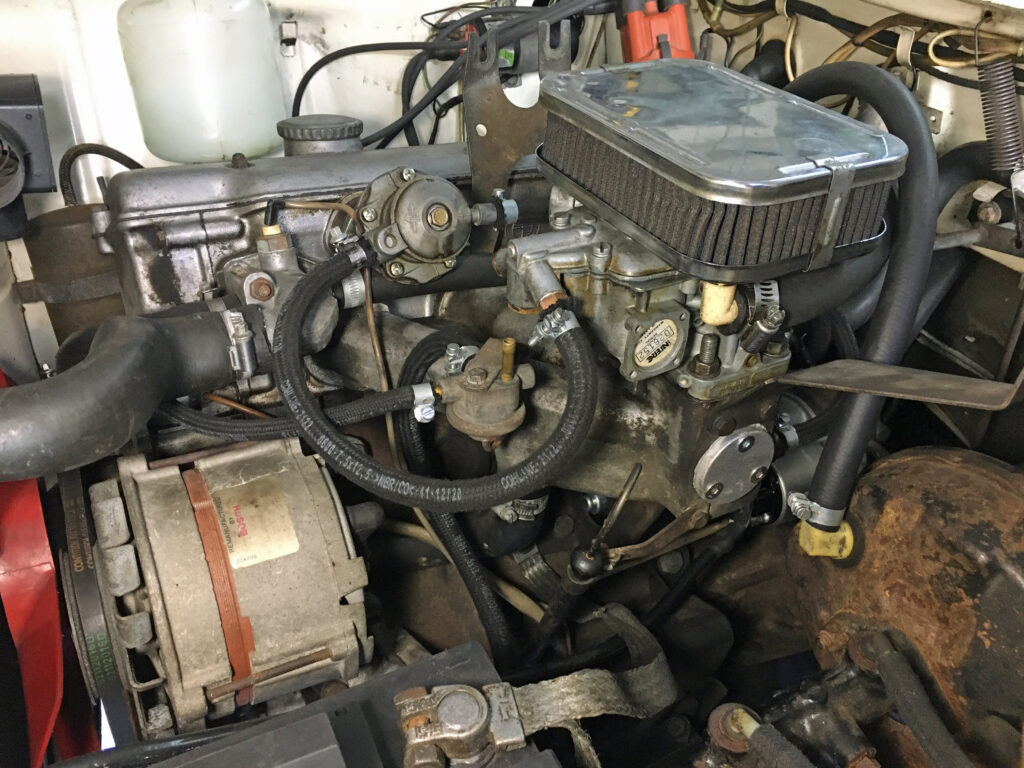
And… the 33-year-old genuine Spanish-made Weber is back.
So, I’d dug down to the bottom of the pile of sand, and there was no ant.
The Chinese-made $115 “Nenkuten”-branded Weber now sits in its box on my shelf. I don’t regret buying it. It was a good experiment. If I buy a dead 2002 with a two-barrel carb that either had been left open to the elements or that the gas inside had turned to melted Gummi Bears, I’d drop it on without hesitation.
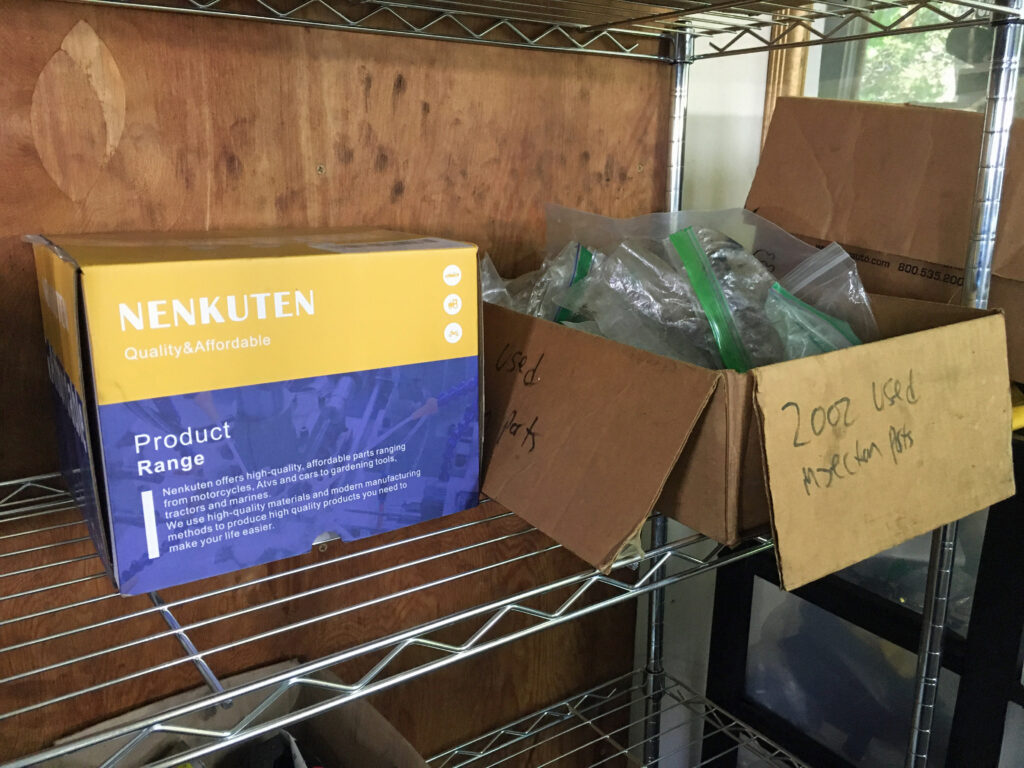
Not a bad thing to have on the shelf.
Next week: The $300 clone Getrag 245 5-speed. Is it worth it?
(Kidding!)
(Of course it’s worth it :^)
—Rob Siegel
____________________________________
Rob’s newest book, The Best of The Hack Mechanic, is available here on Amazon, as are his seven other books. Signed copies can be ordered directly from Rob here.
Tags: part 3 weber clone
